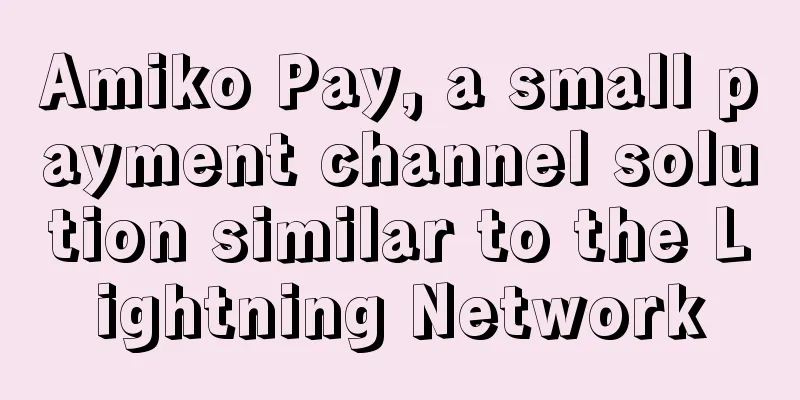Amiko Pay, a small payment channel solution similar to the Lightning Network

|
The Lightning Network is a design improvement for Bitcoin that allows users to make small payments in a decentralized way. Over time, it will help make the entire network scale more efficiently. Although this proposal has received a lot of attention in the Bitcoin community, no mature product has been developed so far. Currently, CJ Plooy is working on another similar project. Plooy recently presented his alternative product, Amiko Pay, at the Scaling Bitcoin conference in Montreal. During the conversation, he mentioned: The basic design of the Lightning Network - a network payment channel. This is actually a pretty old idea. There are already quite a few such platforms, and the Lightning Network happens to be the best so far. Different types of payment channels on the same networkWhile Amiko Pay and the Lightning Network are very similar, Plooy was quick to point out key differences between the two networks’ payment channels at the Scaling Bitcoin conference in Montreal. The first point Pooly made was that when Amiko Pay became the type of payment channel that could be found on the network, it had to offer as much flexibility as possible:
Plooy went on to add:
The ability to build blockchain-independent network payment channels is noteworthy when applied to sidechains. This setup would allow for instant transfers between sidechains. Plooy also added that since different assets can be found on the same network, Amiko Pay nodes can act as decentralized exchanges. Ripple-style IOU channels implementedAlthough Amiko Pay still needs to be improved, the prototype of the channel is already available. Plooy described it in his speech:
While the currently available channel is essentially only used for software testing now, Plooy added that it could also be useful for connections between trusted parties in the future. Building a real lightning channel?The developers behind the Lightning Network are currently working on a sidechain implementation idea, but this would require some changes to the Bitcoin network, so Plooy decided to take a different approach on his own system. He pointed out, "I don't want to rely on Bitcoin network developers to make changes." Plooy described another approach he took to implement lightning channels in Amiko Pay:
Plooy wrote a white paper that explains his third-party-based approach in detail. He said:
Plooy ended his speech by pointing out some of the remaining issues with the network’s payment channels, such as unresolved security vulnerabilities and economic models that could hinder development. Right now, there doesn’t seem to be any major problems for Amiko Pay or the Lightning Network. ---- |
Recommend
Bitcoin mining machine manufacturer Canaan Technology announced investment in Node Semiconductor (Shanghai) Co., Ltd.
Original title: Bitcoin mining machine manufactur...
Palmistry shows which people will have noble people to help them succeed in their careers
Palmistry shows which people will have noble peop...
Bitcoin Unlimited's four major expansion proposals were rejected by the organizers of the Bitcoin Expansion Conference, and the Reddit BTC community criticized it for being unfair
Organizers of the Scaling Bitcoin Conference Bitc...
The idealistic developer’s dilemma: Who will help Grin?
Grin is a very popular project in the US crypto V...
People who are more patient at work
Many people sometimes always can’t understand why...
Big nose face
Big nose face In physiognomy, the tip of the nose...
Is it true that people with wide-set eyes are more popular with the opposite sex?
Many times, some people may find it incomprehensi...
A full review of the fourth episode of "Mining Coins News": Breaking boundaries and accelerating the integration of mining and coin circles
Welcome back, friends! The theme of the fourth ep...
Palmistry Life Line to See When You Will Have Disaster
The lifeline, heart line and wisdom line are one ...
Why do all soldiers have the same face, with straight teeth and thin lips?
Many people think that soldiers look the same. So...
What is a pig eye? Is it good for a woman to have pig eyes?
Eyes are called the windows to the soul, so the ap...
What does the Moon in the Life Palace represent?
The House of Life is one of the twelve houses. Th...
How much do you know about the zodiac signs? What do the different houses reflect?
How much do you know about the zodiac signs? What...
Is it okay to put a fish tank on the balcony of a man with raised eyebrows?
There are actually many places suitable for placi...
What are double phoenix eyes? What is the fate of people with double phoenix eyes?
What are double phoenix eyes? Double phoenix eyes...









